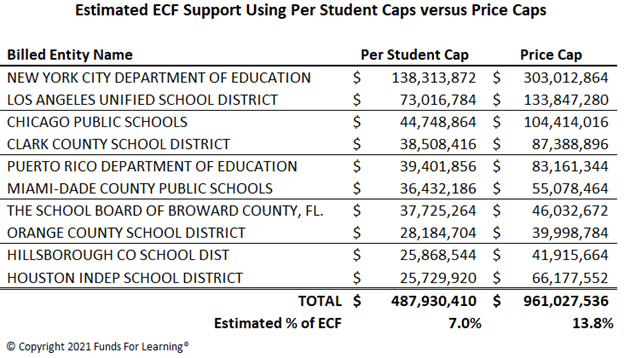This is a significant moment. The education of millions of students is on the line. The Federal Communications Commission (FCC) has been receiving public comments and working feverishly to craft rules for the new $7.121 billion Emergency Connectivity Fund (ECF). This program will significantly impact K-12 schools and libraries during the COVID-19 pandemic by providing much needed reimbursements for remote learning.
Congress is to be commended for providing this financial aid, and the FCC should be applauded for its swift and sincere efforts, especially under such pressure and in such a short timeframe. In particular, it is important that we recognize the strong leadership of Acting Chairwoman Jessica Rosenworcel. In many respects, it is because of her efforts to increase awareness of the Homework Gap that this current opportunity exists. Furthermore, in recent days she has boldly led the FCC by allowing the public to review the draft rules being considered for the ECF. Her vision of the future and her transparent leadership style is admirable.
Because of the gravity of this moment, this is not the time to shy away from a debate. There is too much at stake for too many young people. Therefore, with the understanding that we are united in a common cause, it is necessary to highlight the estimated impact of the FCC’s proposed ECF rules. The FCC is leaning towards adopting a method of administration for the ECF that is only supported by a minority of commenters. Funds For Learning and many others have made the case that combining student counts and community poverty level is an effective mechanism to cap the 100% ECF reimbursements available to schools. A smaller group has argued for price caps and an “all-or-nothing” mechanism that promises sky-high funding for some, but zero support for others.
IMPACT ON URBAN SCHOOLS
There are two primary proposed methodologies to cap ECF reimbursements. Looking at the estimated results of these two approaches illustrates why some might prefer the “all-or-nothing” reimbursement approach. The following table shows the estimated ECF funding for the top 10 E-rate applicants. If these schools were to have their reimbursements capped using a per student method, it is estimated that they would qualify for a total of up to $487.9 million. This is about 7.0% of the overall estimated available funding nationwide. On the other hand, if their reimbursements were capped using the price cap model, they would qualify for an estimated total funding of $961.0 million. This is about 13.8% of the total ECF.
Meanwhile, millions of students who lack Internet access are likely to be shut out from support simply because they live in a community with a slightly lower level of poverty. It is hard to understand why students who lack internet access in one community should benefit from ECF support, while others should not.

The FCC argues that that capping 100% reimbursements at a certain level is contrary to the legislation that created the ECF; yet, the FCC proposes to use a funding prioritization system that history shows us will likely leave many millions of students without any support. How is zero a reasonable amount of funding?
IMPACT ON SERVICE PROVIDERS
Despite the broad need for technology to support remote learning, the FCC has proposed a very narrow set of approved items to support remote learning. Nowhere in the proposed rules are there to be found critical functions, such as cybersecurity or communications platforms. A student cannot connect remotely without these, yet the FCC seems intent on funding only a portion of the required elements necessary to participate in online education. It is as if the FCC has agreed to fund automobiles, but deny support for tires, locks, and windshields.
Similarly, the FCC has dismissed any updates to network infrastructure that might lower the price of connectivity, or provide long-term sustainable support in a community. A primary argument of the FCC’s seems to be that it is a pandemic and schools do not have time to build infrastructure to save money; in reality, the schools have been moving aggressively to expand students’ access to their networks, and the FCC should follow suit.
The narrow eligible services list, combined with an arbitrary price cap on learning devices, has the indirect effect of protecting the telecommunications companies. By capping what schools and libraries can spend on end user equipment, and by prohibiting any network infrastructure upgrades, the FCC has guaranteed that a significant percentage of the funds will find their way into the pockets of the incumbent service providers.
***
Schools and libraries need local flexibility. It is fortunate that we are having a debate about the best way to structure the ECF. Despite different viewpoints and ideas, it is a deliberation worth having, and for that we can all be grateful.
